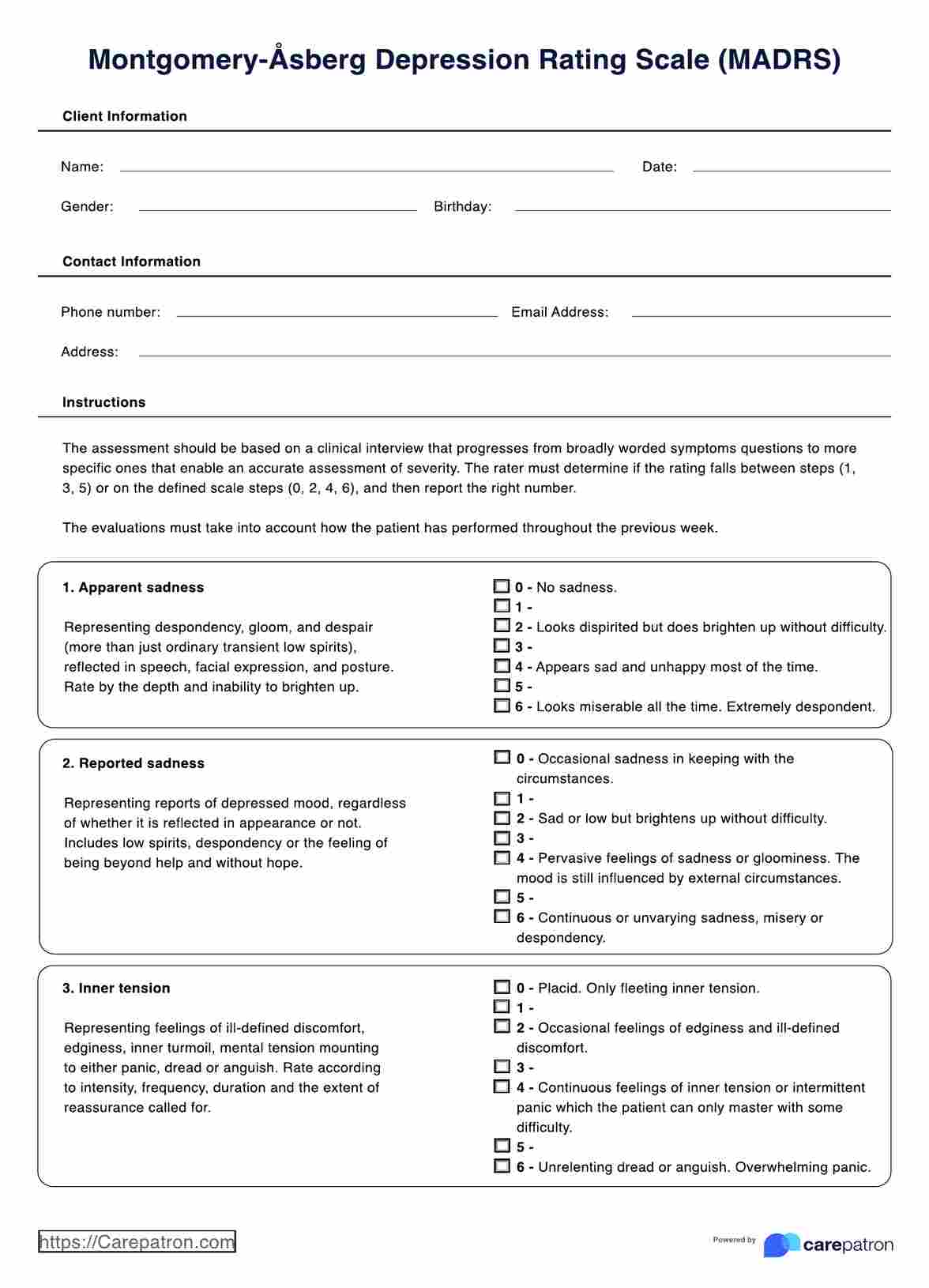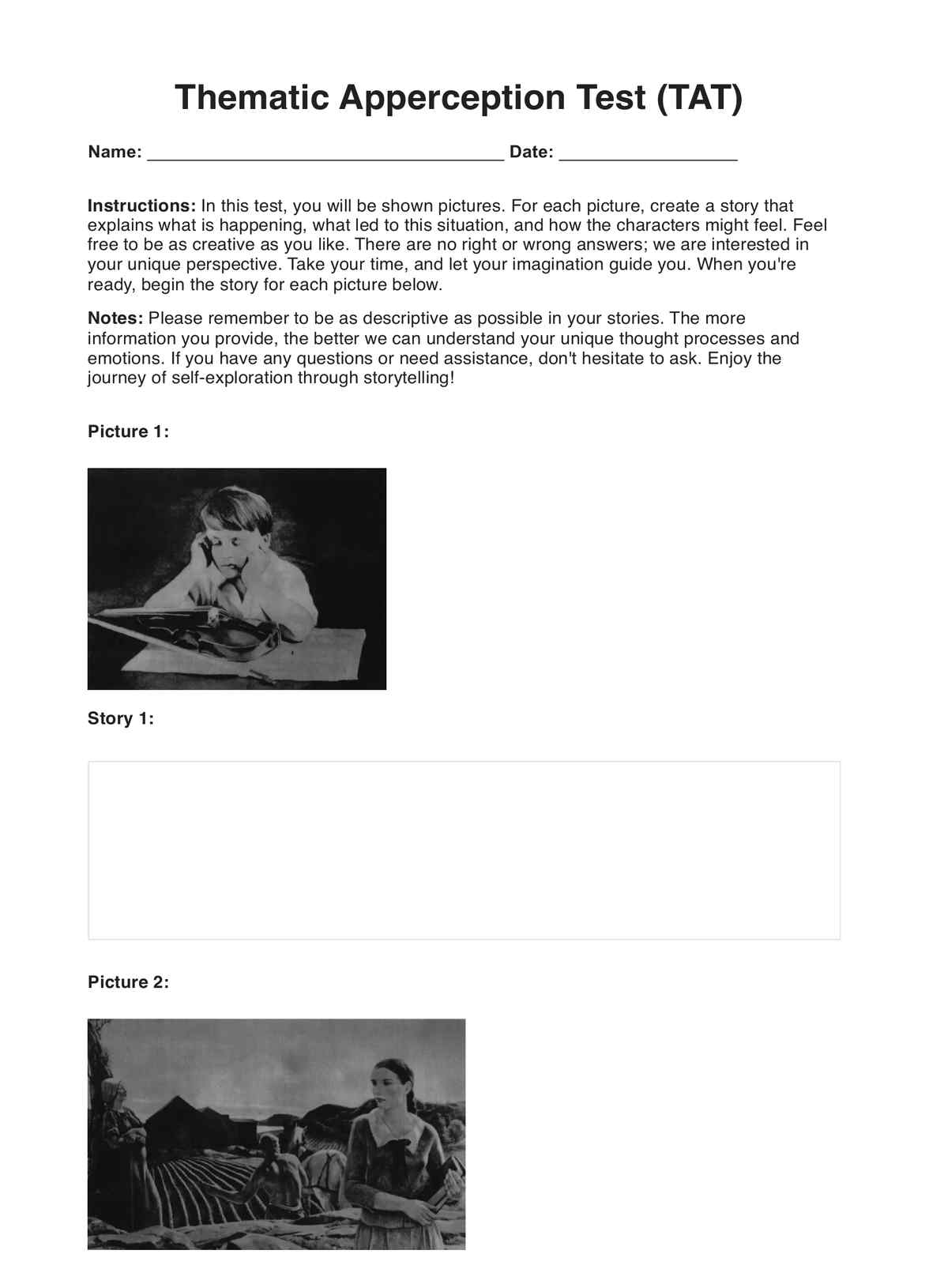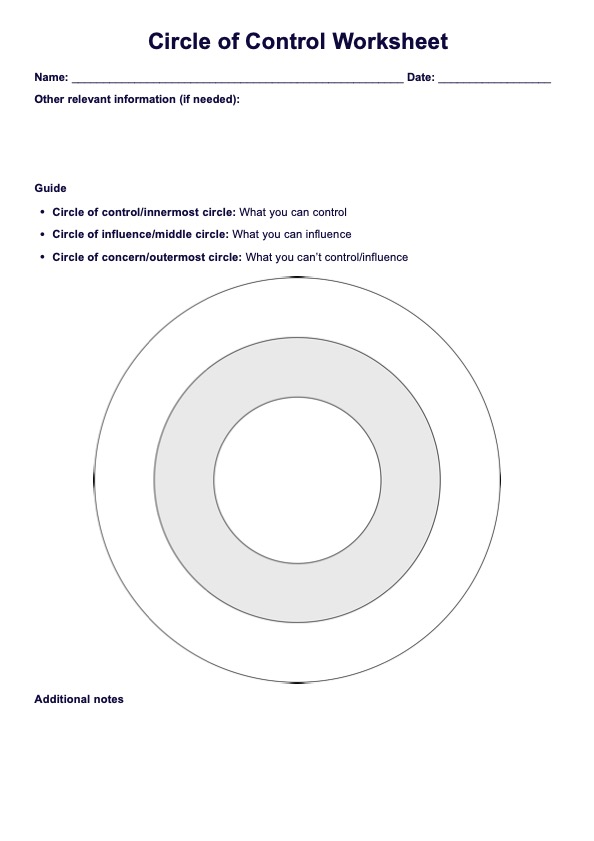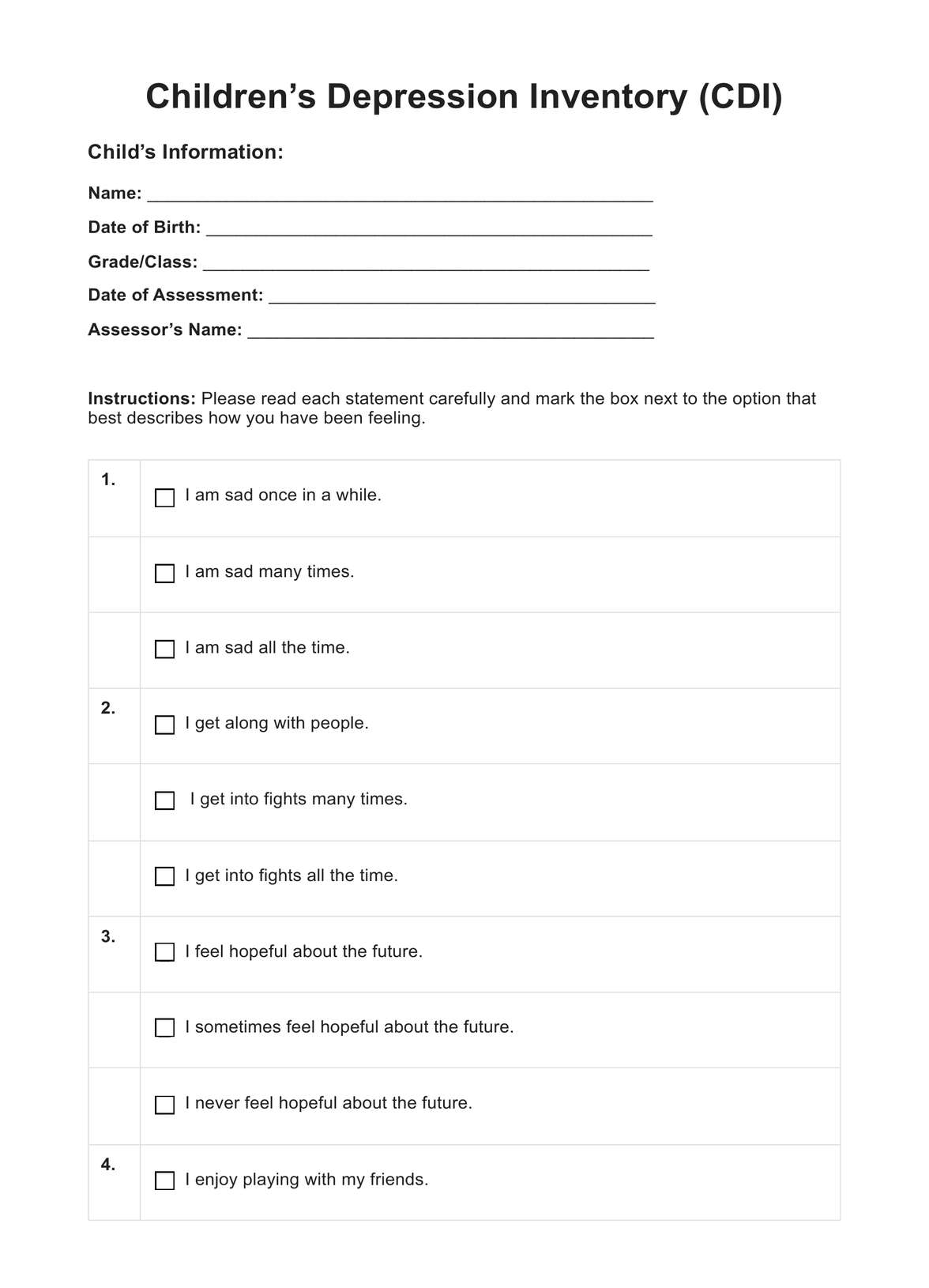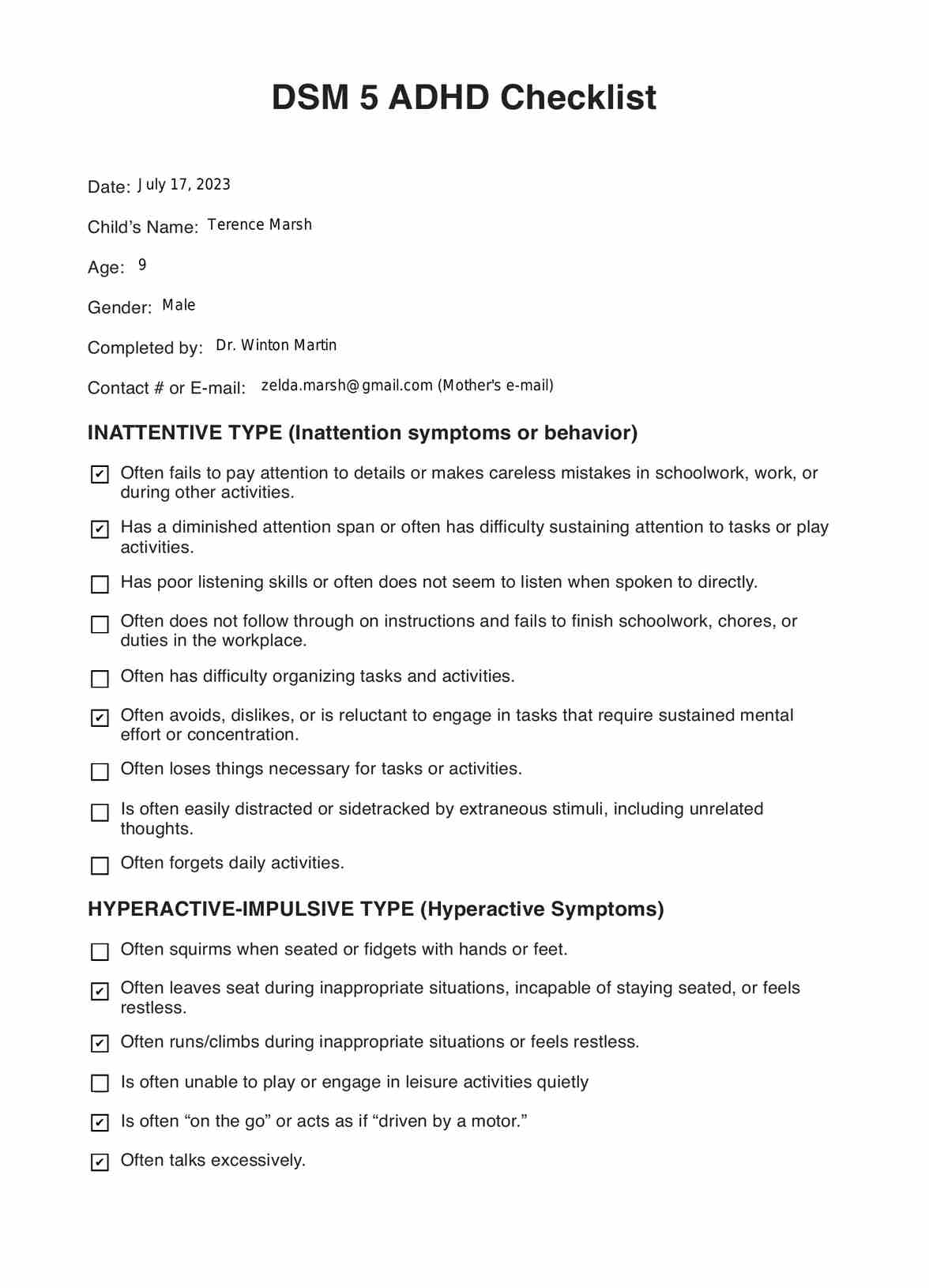TIPP DBT Worksheets
Learn how to use the TIPP DBT Worksheet in your practice. Download a free PDF template to help clients identify triggers and manage intense emotions.


What is a TIPP DBT Worksheet?
In Dialectical Behavior Therapy (DBT), the "TIPP" skill is a distress tolerance technique specifically developed to aid individuals in managing intense emotions and distressing situations. TIPP is an acronym that stands for the following methods:
- Temperature Tip: Use cold water or ice to divert attention from emotional distress. By submerging your face or holding an ice cube, activate the body's "dive reflex" to reduce intense emotions.
- Intense Exercise: Release pent-up emotions and adrenaline through short bursts of low physical activity. Try jumping jacks or running in place to shift focus from distressing thoughts.
- Paced Breathing: Regulate the body's stress response with slow, deep breaths. Direct focus on breath and slow its pace to activate the relaxation response and promote emotional calmness.
- Paired Muscle Relaxation: Intentionally tense and relax muscle groups to release physical tension and achieve overall relaxation.
These techniques are essential components of the distress tolerance skills module in DBT. The primary objective is to provide individuals with practical strategies for effectively managing distressing situations without resorting to harmful behaviors.
A incorporates these principles to assist individuals in practicing the techniques more effectively. This worksheet provides detailed instructions on executing each of the TIPP skills, along with a designated space for recording notes and reflections on the effectiveness of the skills in managing distress. Utilizing this worksheet with therapy sessions allows individuals to discuss their achievements and obstacles in implementing TIPP.
Applying this dialectical behavior therapy template can enrich your practice and elevate client satisfaction.
TIPP DBT Worksheets Template
TIPP DBT Worksheets Example
How does it work?
Carepatron's printable TIPP DBT Worksheet allows you to help your client practice TIPPS skills and regulate their emotions. Here's how to get started:
Step One: Access the free template
Download the TIPP DBT Worksheet using the provided link on this page. You can also get a copy from the Carepatron app or our resources library.
Step Two: Discuss how it works
Educate your client about each TIPP skill and help them understand its importance for emotional regulation. Show your client the worksheet and explain how to fill it out.
Step Three: Client completes the TIPP DBT Worksheet
Walk your client through each worksheet step, filling in details as you go along. Ask questions to help them identify potential triggers and learn strategies to manage their intense emotions better.
Step Four: Review and discuss the worksheet
Once your client has finished filling out the TIPP DBT Worksheet, review it together. Discuss any potential strategies or actions they can take to manage their intense emotions when faced with a trigger.
When to use the TIPP DBT Worksheet?
You can employ our free TIPP DBT Worksheet in your therapeutic sessions centered around Dialectical Behavior Therapy. This worksheet can help clients develop distress tolerance skills and regulate their emotions. Alternatively, you may use this worksheet to:
Educate clients on how to manage overwhelming emotions
Our TIPP DBT Worksheet is a great way to teach your clients how to cope with intense feelings. With the help of this worksheet, they can learn how to recognize their internal distress signals and develop strategies for managing them.
Identify and discuss potential triggers
You can also use this template to discuss potential triggers with your clients. This will allow them to recognize situations when they are likely to experience intense emotions. Additionally, this can help them learn how to prepare for and prevent such triggers from occurring in the future.
Promote in-session discussions
Using the TIPP DBT Worksheet within sessions can stimulate meaningful conversations about emotional regulation and distress tolerance. Through these discussions, you can further understand your client's perspectives and experiences and devise a treatment plan tailored to their needs.
Encourage personal growth
The TIPP DBT Worksheet can inspire personal growth. As clients work through the worksheet, they inevitably encounter obstacles that challenge their coping mechanisms. The worksheet can help them identify and address weaknesses to build on their strengths.
Benefits of Using the TIPP DBT Worksheet
Here are several advantages of using our TIPP DBT Worksheet in your practice:
It's pre-made and fully digital
You don't have to come up with the worksheet yourself. You can download our pre-made template and use it as soon as needed. Additionally, the worksheet is entirely digital, so you can easily share it with your clients anytime, anywhere.
It's comprehensive and customizable
Our TIPP DBT Worksheet covers all the core components of DBT. However, it’s flexible enough to adjust according to your client's needs.
It promotes active participation
The TIPP DBT Worksheet encourages clients to take a hands-on approach to personal growth. By requiring them to reflect on their experiences and behaviors, the worksheet fosters a sense of involvement and ownership in their therapeutic journey.
It's a convenient reference
The worksheet is an easy-to-access reference for clients during moments of emotional distress. They can revisit the exercises and techniques discussed in the session, reinforcing their learning and helping them apply their newly found coping strategies.
Commonly asked questions
Mental health professionals, especially those practicing Dialectical Behavior Therapy, leverage TIPP DBT Worksheets to facilitate the learning and applying distress tolerance skills.
TIPP DBT Worksheets provide a structured approach to developing distress tolerance skills, enhancing self-awareness, fostering effective coping strategies, and promoting emotional clarity and focus.
You can utilize TIPP DBT Worksheets during therapy sessions or as homework assignments. This resource aids clients in identifying and managing distress while honing practical distress tolerance skills with the therapist's guidance.


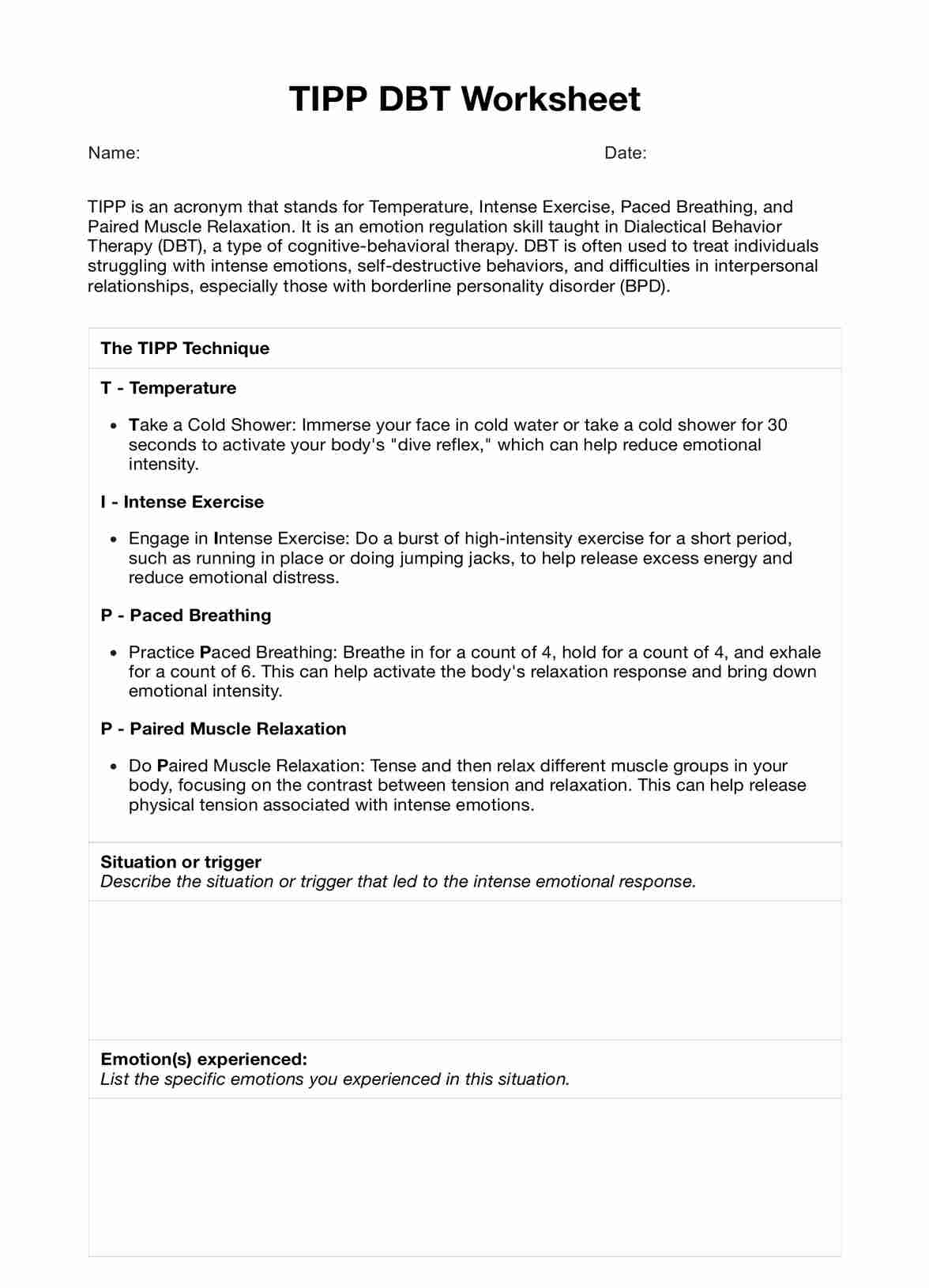
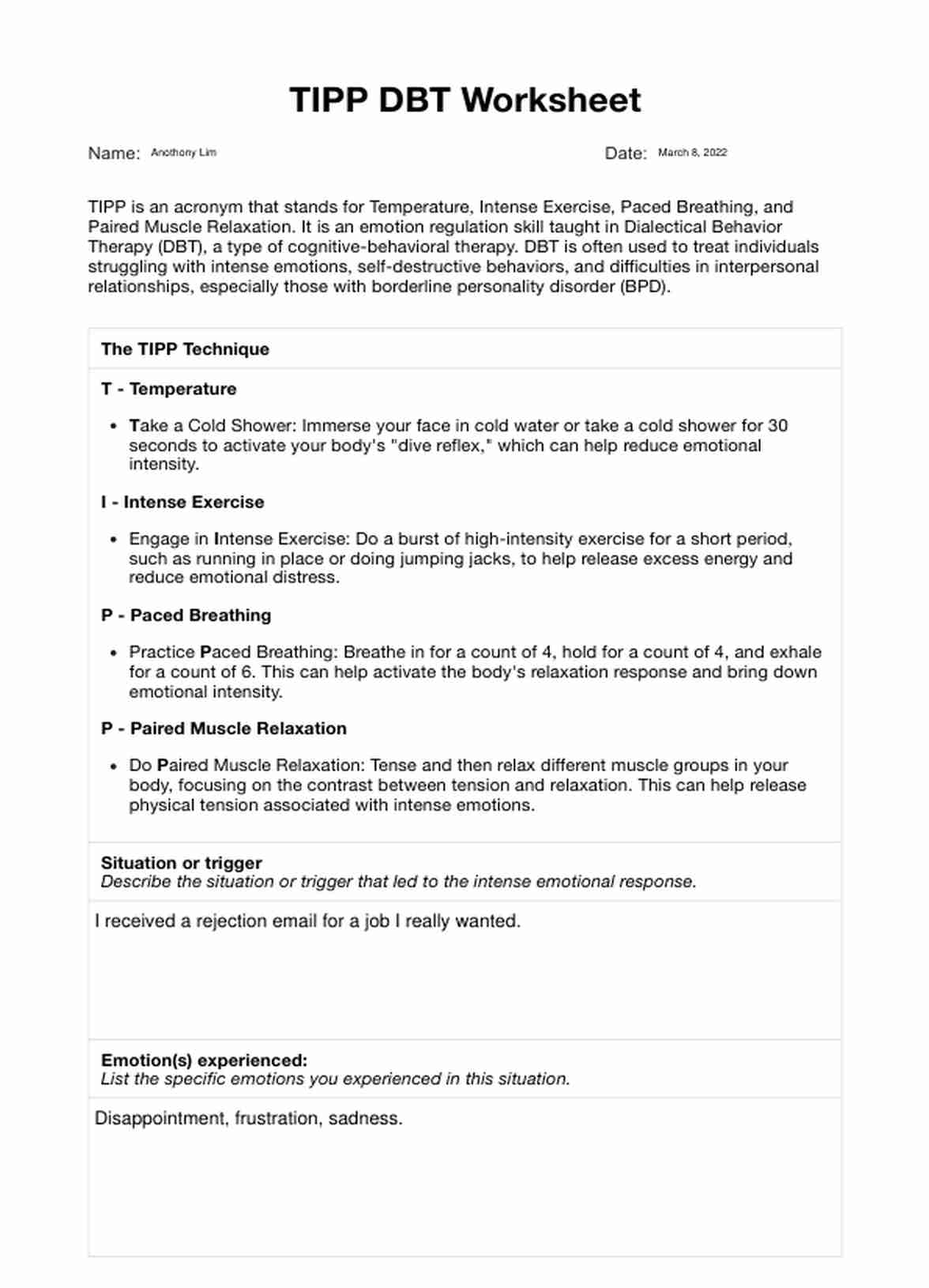















-template.jpg)





















































































